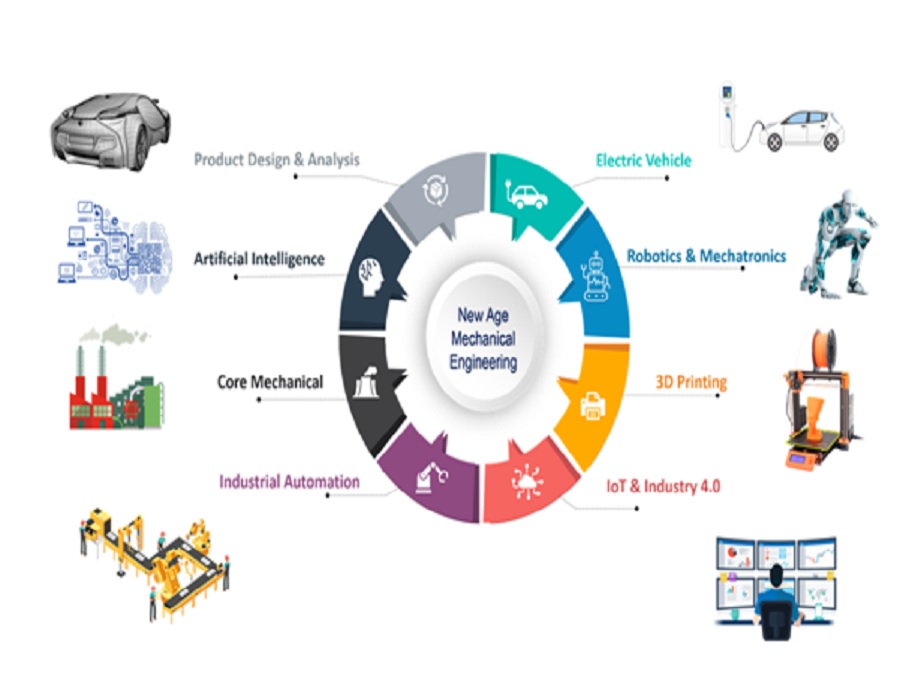In today’s digital age, technology has permeated almost every aspect of our lives. One of the most transformative innovations of recent times is the Internet of Things (IoT). This interconnected network of physical devices, vehicles, appliances, and other objects, embedded with sensors, software, and connectivity, has the potential to revolutionize various industries. In particular, the IoT is poised to bring about a significant transformation in mechanical systems, enhancing their efficiency, reliability, and overall performance. In this blog, we will explore the power of IoT in revolutionizing mechanical systems and the myriad benefits it offers.
To understand the impact of IoT on mechanical systems, it is crucial to recognize the challenges these systems face. Mechanical systems, such as engines, turbines, and pumps, are integral to many industries, including manufacturing, energy, transportation, and agriculture. However, they often operate in complex environments, subjected to rigorous usage, extreme conditions, and wear and tear. Consequently, monitoring and maintaining these systems becomes paramount to prevent unexpected failures, reduce downtime, and optimize performance.
Traditionally, mechanical systems have been monitored through manual inspections or periodic maintenance schedules. However, these approaches are inherently limited, as they rely on human intervention and are prone to errors, delays, and high costs. This is where the IoT comes in, offering a paradigm shift in how mechanical systems are monitored, controlled, and maintained.
By integrating sensors into mechanical systems, the IoT enables real-time data collection and analysis. These sensors can measure various parameters, such as temperature, pressure, vibration, and fluid levels, providing a wealth of information about the system’s health and performance. This data is then transmitted to a central system or the cloud, where sophisticated algorithms and machine learning models analyze it to derive valuable insights.
One of the significant advantages of IoT-enabled mechanical systems is predictive maintenance. Maintenance activities can be planned and executed proactively by monitoring the real-time condition of components and identifying potential failures before they occur. This approach not only minimizes unplanned downtime but also optimizes the use of resources, reducing costs associated with unnecessary maintenance or component replacements. Predictive maintenance can significantly extend the lifespan of mechanical systems, resulting in improved reliability and increased operational efficiency.
Furthermore, the IoT allows for remote monitoring and control of mechanical systems. Through web-based dashboards or mobile applications, operators can access real-time data and analytics from anywhere, enabling them to make informed decisions and take prompt actions. Remote monitoring also enables experts to provide support and troubleshooting remotely, reducing the need for on-site visits. This level of connectivity enhances efficiency, saves time, and improves overall system performance.
Another aspect where IoT revolutionizes mechanical systems is automation and optimization. By leveraging the vast amount of data collected, IoT systems can optimize mechanical operations in real-time. For example, in a manufacturing plant, IoT-enabled machines can adjust their settings based on specific requirements, reducing energy consumption and waste while improving product quality. Such optimization can lead to significant cost savings and environmental benefits.
Moreover, the IoT facilitates seamless integration with other digital technologies, such as artificial intelligence (AI) and big data analytics. AI algorithms can process the vast amount of data collected from IoT sensors to identify patterns, anomalies, and correlations that may not be apparent to human operators. This enables predictive analytics, intelligent decision-making, and the ability to optimize mechanical systems continuously.
The benefits of IoT in revolutionizing mechanical systems are not limited to the industrial sector alone. In the transportation industry, IoT sensors can monitor the condition of vehicles, engines, and critical components in real-time, ensuring timely maintenance and reducing the risk of accidents. In agriculture, IoT-enabled systems can monitor soil moisture levels, weather conditions, and crop health, allowing farmers to optimize irrigation, minimize resource usage, and improve crop yields. The possibilities are vast and extend to various sectors, creating a future where mechanical systems operate with unprecedented efficiency and reliability.
However, it is essential to address potential challenges associated with the widespread adoption of IoT in mechanical systems. Security and privacy concerns must be taken seriously, as interconnected systems may become vulnerable to cyber-attacks. Robust security measures and encryption protocols must be implemented to safeguard sensitive data and ensure the integrity of mechanical systems. Additionally, interoperability standards and protocols must be established to enable seamless communication and integration among IoT devices and platforms.
In conclusion, the Internet of Things can revolutionize mechanical systems across industries. By enabling real-time monitoring, predictive maintenance, remote control, and optimization, IoT brings forth unparalleled efficiency, reliability, and performance. As technology continues to evolve and more devices become interconnected, the potential for IoT in transforming mechanical systems will only grow. Embracing this transformative technology will undoubtedly shape a future where mechanical systems operate at their peak potential, driving progress and innovation in countless sectors.

